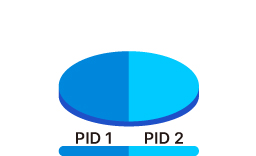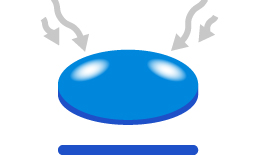Temperature Control Challenges in Dry Etching Equipment
 Complex Process Recipes
Complex Process Recipes
 Temperature Disturbances
Temperature Disturbances
 Heating Delay
Heating Delay
In the dry etching process, temperature control is a crucial factor. The wafer is heated to a specific temperature using an electrostatic chuck (E-Chuck, ESC) heater, enabling efficient and uniform etching reactions.
The dry etching process involves introducing different gases in stages, where the plasma interacts with the wafer's thin film to carry out the etching reaction. However, the complexity of the process recipe and gas introduction can disrupt the stability of wafer temperature control, ultimately impacting the yield and quality of semiconductor devices.
The shape and linewidth of dry etching are governed by the sidewall deposition of etching byproducts, and the adhesion of these byproducts is strongly influenced by temperature. As gases are introduced and the plasma etching progresses, the wafer temperature is simultaneously cooled by gases and heated by plasma. To enhance the precision of etching and sidewall deposition, it is essential not only to precisely control the wafer’s heating by the electrostatic chuck, but also to account for the additional cooling and heating effects caused by the gases and plasma.
In addition, during the heating process, due to the wafer's thickness and the delay in temperature rise, the heater will continue to output heat toward the target temperature (SV). This overshoot can lead to excessive heating of the wafer, potentially affecting the quality of the components.